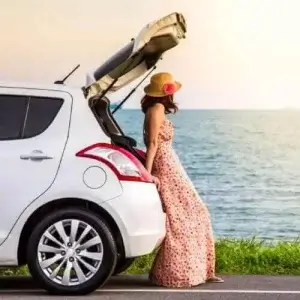Home / Compare Car Insurance / Cheap car insurance

Key takeaways
Many people settle for a cheap car insurance deal without considering the level of cover they’re receiving. When weighing up price against coverage, it’s important remember the following:
- Looking for the right car insurance policy is easily done using our comparison service and will provide you peace of mind that you are protected when you’re behind the wheel.
- Car insurance doesn’t have to cost you the world. There are ways to save money by reducing your premiums.
- There are cheaper options like opting for tailor-made cover to take advantage of when shopping for the most affordable insurance.
Tips for finding cheap car insurance

Carefully consider the level of cover you need
Really consider the type of cover you need and any optional extras to suit; don’t opt for lower cover just to save on premiums, as this may come back to hurt you financially in the event of a claim.
Always read the details of your policy
Always read the full details of any new policy in the Product Disclosure Statement (PDS) before choosing cover.
List drivers to avoid paying further excesses
List the drivers who’ll be driving the car, as having prospective drivers (e.g. friends or family who may use it) listed on your policy may help you avoid any additional excess if they were driving at the time of an accident.
Review your policy if you haven’t since turning 25
If you’re over 25 and haven’t reviewed your car insurance policy, you could be paying an unnecessary premium due to (previously) being considered a young driver.
Purchase online to be eligible to pay less
If you purchase your car insurance policy online, you may be eligible to pay less or receive an online discount.
The types of car insurance
Comprehensive car insurance

A comprehensive car insurance policy provides the broadest level of cover of the available types of car insurance policies.
This policy can cover the repair costs of damage to all vehicles and property involved in an accident that you cause. It may typically cover your car for fire damage, theft, a hire car (following a not-at-fault accident), associated towing costs, and new car replacement costs (if your car is written off in an accident), choice of repairer and the option of reduced window glass (windscreen) excess.
However, depending on your individual circumstances, the cost of some comprehensive policies could outweigh the replacement cost of a vehicle of low market value. This is where a different type of cover could be a smarter play for you.
Third Party Fire and Theft (TPFT)
Third Party Fire and Theft policies offer cover for damages to other vehicles in an accident you cause, with the added feature of covering your vehicle for fire and theft damage. It’s a less pricey option than comprehensive cover but is still a mid-level product across the range of car insurance.
Third Party Property Damage (TPPD)
If comprehensive or TPFT cover both seem excessive for your vehicle, Third Party Property Damage could be worth your consideration if you’re shopping for cheap car insurance.
Any accidental damage to other people’s vehicles (especially an expensive one!) can significantly impact your financial situation if you’re driving a car without cover. TPPD has you covered if you accidentally cause damage to other people’s property. It won’t cover any damage to your own car (except in very limited circumstances), so you’ll need to consider the low cost of these policies against the coverage you get.
Compulsory Third Party (CTP)/Green Slip
All vehicles on Australian roads must be covered by Compulsory Third Party insurance (also known as Green Slip in New South Wales). This insurance covers your any legal liability for injury and death you cause in a car accident.
CTP/Green Slip insurance is a legal requirement across Australia. Depending on which state or territory you live in, it might be included in your registration, or you’ll have to take out a policy yourself; some states may also allow you to choose the car insurance company that provides your CTP insurance.
Cheaper insurance options
How to reduce car insurance costs

Before you take out any insurance policy, you should understand that there are several factors that can either raise or lower premiums. For example, a young driver may generally have a higher premium than an older, more experienced driver. Other factors that influence your car insurance premiums can include:
- Your driving record and prior insurance claims history
- The age of the driver(s)
- Any uninsured drivers or learner drivers
- The purpose of the vehicle (e.g. personal or business use)
- Where your vehicle is stored or how securely parked
- A higher excess
- Choosing agreed value or market value.
Each of these factors can have a real effect on both the type of insurance products available to you and the premiums that will apply.
Always check the relevant Product Disclosure Statement (PDS) and the Target Market determination (TMD) policy documents to understand the full details of a product and any exclusions before you decide on the best car insurance policy for you.
Tailor-made cover
To provide a great value car insurance option, some insurance providers may also offer a tailored insurance product that may suit your lifestyle more so than a standard policy would. Also known as pay-as-you-drive or low-kilometre policies, these types of insurance options account for the actual time spent behind the wheel as opposed to a blanket standard insurance cover which is especially beneficial for those who do not commute daily from A to B and may only drive on weekends or on occasion.
This option would suit those drivers who use their cars only sparingly, and usually come with a lower premium to reflect the lower risk of accidents and claims.
Meet our car insurance expert, Adrian Taylor
As a General Insurance expert with over 13 years’ experience in financial services, Adrian Taylor is passionate about demystifying car insurance for consumers, so they have a better understanding of what they’re covered for. Adrian’s goal is to make more information available from more insurers, to make it easier to compare and save.


